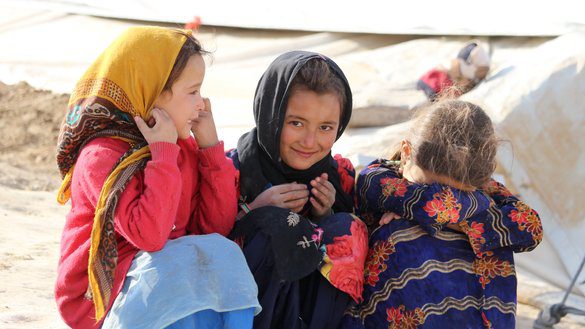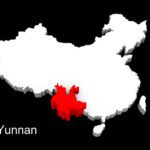The Center for the Scientific Study of Families reports are designed to provide relevant information about the conditional state of families in a specified context. The report provides information such as population, culture, family structure, and family life.
Family reports are an important tool for improving the lives of families. By providing information about the family’s conditional state and context, family reports can help improve communication between families and service providers and lead to better outcomes for families and children.
Introducing Badghis Afghanistan
According to an overview of Badghis, it is a landlocked province in Afghanistan, sharing borders with Turkmenistan to the north and northwest, Herat province to the southwest, and Ghor province to the southeast. The province is mostly characterized by rugged and arid terrain, with some fertile valleys and agricultural areas along its rivers.
Qala-e-Naw is the capital and largest city of Badghis. It serves as the administrative center and is an important economic hub in the province. The estimated population of Badghis was around 1 million people.
A provincial profile report notes that the economic sustenance of the communities in Badghis relies on various sources, including rain-fed agriculture, livestock rearing, remittances, forest nuts, and handicrafts. Ninety percent of the region comprises rain-fed hills exhibiting favorable soil characteristics that extend to a depth exceeding four meters. The implementation of water-resistant crops, rain-fed seeding, pasture land improvement, and water harvesting techniques represents a promising endeavor that can contribute to the enhancement of the community’s livelihood income.
Cultural and Ethnic Diversity of Badghis
The province is home to diverse ethnic groups. The U.S. Naval Postgraduate School identifies the following ethnic groups (and their percentage of the population) residing in Badghis: Tajis (62%), Pashtun (28%), Uzbek (5%), Turkmen (3%), and Baluch (2%).
Tajiks. Tajik are Badghis Province’s largest ethnic group. The Tajiks are Afghanistan’s second largest ethnic group, comprising 25–30% of the population. The Tajiks of Afghanistan live in settled communities. The Tajiks are called Farsiwan by Pashtuns because Farsi is Afghanistan’s national language (50% of Afghanistan speaks Farsi, compared to 35% for Pashto).
Pashtuns. Durrani (a dominant Pashtun tribe) Pashtuns live mostly in Mughab and Ghormach Districts of Badghis. The Taliban was based on the Pashtun, Afghanistan’s largest ethnic group, and the Ghilzai, Said’s largest tribe. Code violations can deeply offend traditional Pashtunwali (“the way of the Pashtun”) moralists, who may hold a grudge for generations. The largest ethnic group in Afghanistan, the Pashtuns, are fiercely independent and believe they are the rightful leaders of Afghanistan.
Hazara. The Hazara, an ethnic and religious group in Afghanistan, have faced discrimination and violence. The Hazara look different from the Pashtun majority. Most Hazara are Shi’a Muslims , unlike Pashtuns, who are Sunnis. Hazara, the Afghan underclass, were exploited as servants and laborers. Thus, Hazaras are anti-government and anti-Pashtun.
Baluch. Over a million Indo-Iranian Baluch live in Afghanistan, Pakistan, and Iran. The Baluch are mostly Sunni. Their khan-based power structures are considered more concentrated than those of the more fractious Pashtuns. Afghan nomadic people live in the southernmost districts of the three southernmost provinces, with a small number in Badghis Province.
Uzbek and Turkmen. Uzbeks (9%) and Turkmen (3%) make up about 12% of Afghanistan’s population, though their exact number is unknown and contested. Both groups live mostly in northern Afghanistan. Turkmen are Turkic-speaking tribes that emerged from Oghuz Khan in the seventh and eighth centuries. Sunni Hanafi Turkmen are closely related to modern Turkey to the west and identical to the majority Muslim population of their Central Asian kin state across the border to the north. In recent years, they have become semi-nomadic instead of tribal.
Also Turkic-speaking are the Uzbeks. Some claim they are Genghis Khan’s descendants and emerged in Central Asia in the third century BCE. Most Turkic-descended Sunni Muslims are Hanafi, reflecting a cultural rather than religious identity. Their Turkish dialect, Uzbek, is closely related to that of the Uyghur Muslim minority of Xinjiang, China.
Uzbeks and Turkmen’s tribal identities still shape their social and political structures. Both groups have shaped Afghan culture through sport and music.
Family Statistics
Family statistics for Badghis are dated, but they are the most reliable data available for the region. As of 2014, the average family household size was 5.7 people. The same sources note that as of 2005, no household had access to electricity, with only 17% of households having access to safe drinking water as of 2011. As of 2005, the majority of households (59%) reported agriculture as a source of income. Our research on this province was not able to identify any marriage and/or divorce rate data; however, Badghis is one of the provinces in the country that engages in a high number of child marriages.
Conclusion
Family life in Badghis, Afghanistan, is characterized by poverty, hardship, and insecurity. The majority of families in the province live in rural areas and rely on subsistence agriculture for their livelihood. As time passes, hopefully more reliable and consistent data about families in his province will be made available to better understand their conditional state.





